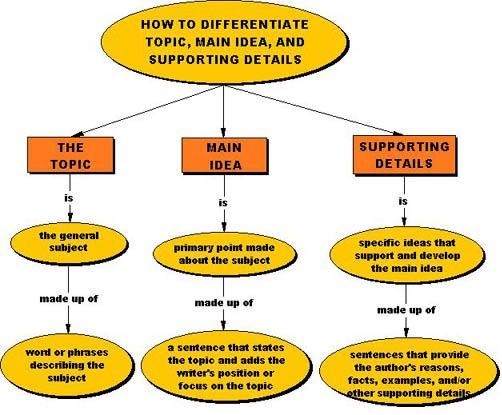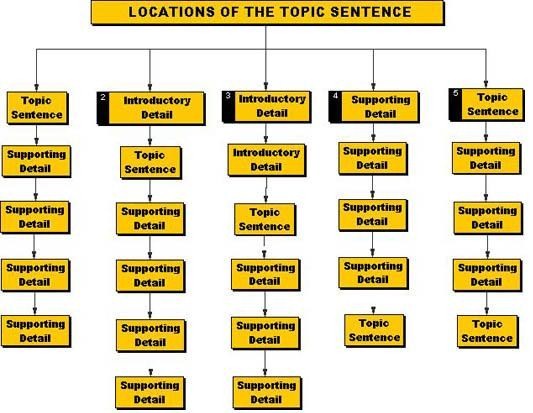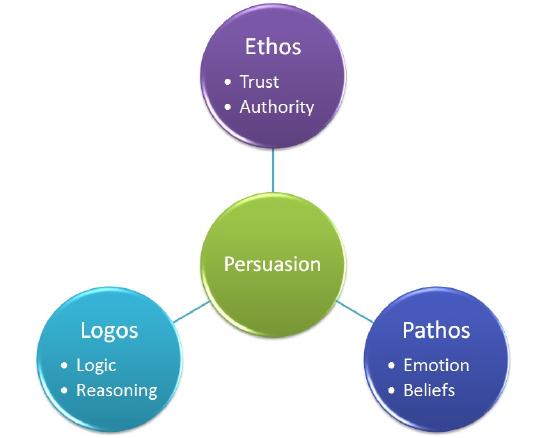

Sometimes the answer to these questions will be very clearly stated in the text itself. Sometimes it is less obvious, and in those cases, the techniques on the following page will be useful.
According to author Pavel Zemliansky,
Arguments then, can be explicit and implicit, or implied. Explicit arguments contain noticeable and definable thesis statements and lots of specific proofs. Implicit arguments, on the other hand, work by weaving together facts and narratives, logic and emotion, personal experiences and statistics. Unlike explicit arguments, implicit ones do not have a one-sentence thesis statement. Instead, authors of implicit arguments use evidence of many different kinds in effective and creative ways to build and convey their point of view to their audience. Research is essential for creative effective arguments of both kinds.
Even if what you’re reading is an informative text, rather than an argumentative one, it might still rely on an implicit thesis statement. It might ask you to piece together the overall purpose of the text based on a series of content along the way.
The following video defines the key terms explicit and implicit, as they relate to thesis statements and other ideas present in what you read. It also introduces the excellent idea of the reading voice and the thinking voice that strong readers use as they work through a text.
To help keep you on your toes, the author of this video challenges you to find her spelling mistake in one of her cards along the way!

This next image shows where a topic sentence might reside in the paragraph, in relation to the rest of the supporting details:

In #5 of the sequence above, the topic sentence is rephrased between the opening and closing of the paragraph, to reinforce the concept more strongly.
Many authors use the PIE format to structure their essays. PIE = point, illustration, explanation to structure their body paragraph and support their thesis. The point furthers a thesis or claim and is the same as the main idea, the illustration provides support for the point, and the explanation tells the audience why the evidence provided furthers the point and/or the thesis.

For example, in his argument against the +/- grading system at Radford, student-writer Tareq Hajj makes the Point that “Without the A+, students with high grades in the class would be less motivated to work even harder in order to increase their grades.”
He Illustrates with a quote from a professor who argues, “‘(students) have less incentive to try’” (Fesheraki, 2013).
Hajj then Explains that “not providing [the most motivated students] with additional motivation of a higher grade … is inequitable.”
Through his explanation, Hajj links back to his claim that “A plus-minus grading scale … should not be used at Radford University” because, as he explains, it is “inequitable.” The PIE structure of his paragraph has served to support his thesis.
Ever heard the phrase “everyone is entitled to his opinion”? It is indeed true that people are free to believe whatever they wish. However, the mere fact that a person believes something is not an argument in support of a position. If a text’s goal is to communicate effectively, it must provide valid explanations and sufficient and relevant evidence to convince its audience to accept that position. In other words, “every author is entitled to his opinion, but no author is entitled to have his opinion go unchallenged.”
What are the types of evidence?
Any text should provide illustrations for each of its points, but it is especially important to provide reliable evidence in an academic argument. This evidence can be based on primary source material or data (the author’s own experience and/or interviews, surveys, polls, experiments, that she may have created and administered). Evidence can also stem from secondary source material or data (books, journals, newspapers, magazines, websites or surveys, experiments, statistics, polls, and other data collected by others).
Let’s say, for example, that you are reading an argument that college instructors should let students use cell phones in class. Primary source material might include a survey the author administered that asks students if policies forbidding cell phone usage actually stop them from using their phones in class. Secondary sources might include articles about the issue from Faculty Focus or The Chronicle of Higher Education.
Writers are generally most successful with their audiences when they can skillfully and appropriately balance the three core types of appeals. These appeals are referred to by their Greek names: logos (the appeal to logic), pathos (the appeal to emotion), and ethos (the appeal to authority). All of these are used in one way or another in your body paragraphs, particularly as it relates to the support or information in the paragraph.

Authors using logic to support their claims will include a combination of different types of evidence. These include the following:
Authors using authority to support their claims can also draw from a variety of techniques. These include the following:
Authors using emotion to support their claims again have a deep well of options to do so. These include the following:
As you can see, there is some overlap on these lists. One technique might work simultaneously on multiple levels.
Most texts rely on one of the three as the primary method of support, but may also draw upon one or two others at the same time.
Check your understanding of supporting details by doing this quiz.
Read the paragraph below and find the main idea and supporting details.
My parents were very strict when I was growing up. My mother in particular was always correcting my behavior. One day when I forgot to look both ways when I was crossing the street, my mother made me go back home; she said that I could not go out at all if I could not be safe. My father was more concerned with my grades. Every night he would make me go to my room before I could watch television.
Let’s examine the pattern for this paragraph. The first sentence (1) presents the main idea, that my parents were strict. The second sentence (2) explains what I mean by “strict,” by saying that my mother was strict in correcting my behavior. The third sentence (3) offers an example of how she would correct my behavior. The fourth sentence (4) explains further, that my father was strict when it came to schoolwork, and then the fifth sentence (5) offers an example of how he was strict.
If we were going to diagram the paragraph above, it would look like this:
EXPLAIN (2)-___________________EXPLAIN (4)
EXAMPLE (3) EXAMPLE (5)
One way to talk about whether a sentence directly supports the main idea (the second level), or indirectly supports the main idea (the third level) is to call them MAJOR detail sentences or MINOR detail sentences. Major details directly explain something about the topic, while minor details offer examples for the Major detail that came right before.
Read the paragraphs, and then identify each sentence as either a
main idea, a major detail, or a minor detail sentence.
Single parents have to overcome many obstacles to return to school. If
the child is very young, finding quality babysitting can be difficult. Many
babysitters are unreliable and that can mean that the parent has to miss
many classes, which can hurt their grades. It is also hard to find enough
time to study. Children require a lot of attention and are also noisy, and
that can interfere with a parent's ability to complete their homework.
Finally, raising children is expensive. Many single parents discover that
they can’t meet the costs of both raising children and paying for tuition,
books, and fees.
Sentence #1:
Sentence #2:
Sentence #3:
Sentence #4:
Sentence #5:
Sentence #6:
Sentence #7:
My grandmother turned 70 last year and celebrated by going skydiving.
She said she always wanted to try and figured it was now or never. Many
people think that when you get older you can no longer do fun things, but
this is not true. The senior center in town offers dance lessons and also
takes groups to the art museum. The classes are always full because so
many people want to try new things. Towns are even developing senior
living communities around activities such as golf and tennis. Those
communities are very popular because people like to live with others who
share their interests.
Sentence #1:
Sentence #2:
Sentence #3:
Sentence #4:
Sentence #5:
Sentence #6:
Sentence #7
Below you will find several main idea sentences. Provide appropriate supporting sentences following the pattern of Major-Minor-Major-
Minor.
1. It is not a good idea to watch a lot of television.
Major:
Minor:
Major:
Minor:
2. Coaches have good reasons to be firm with the players on their team.
Major:
Minor:
Major:
Minor:
3. Many people believe it is a bad idea to spank children.
Major:
Minor:
Major:
Minor:
4. There are several steps I can take to be successful in college.
Major:
Minor:
Major:
Minor:
Return to the Thesis exercise you did previously. As part of that exercise, you identified two topic sentences from your selected reading. Now, look more closely at the paragraphs where those two topic sentences came from.
This page last updated June 6, 2020.